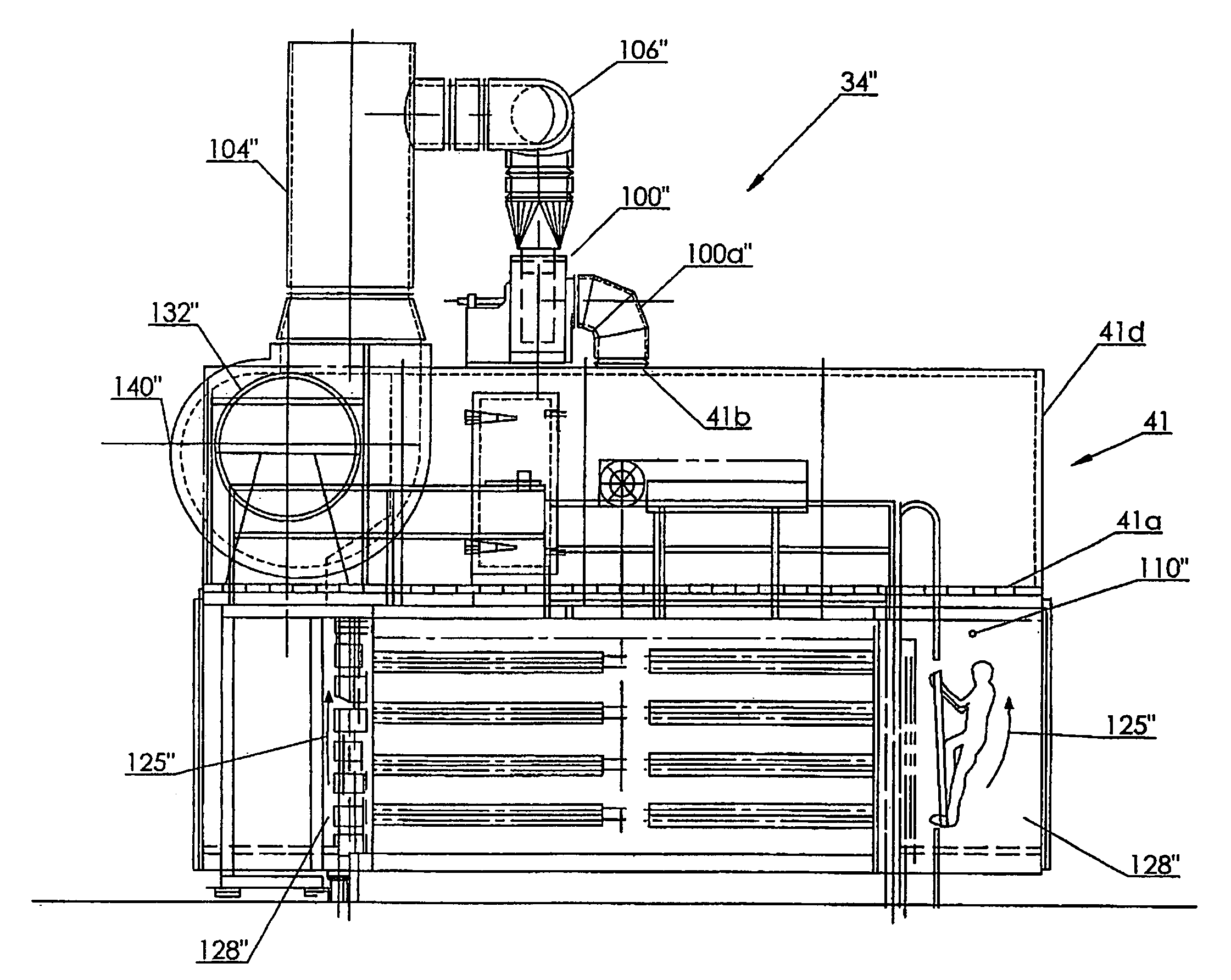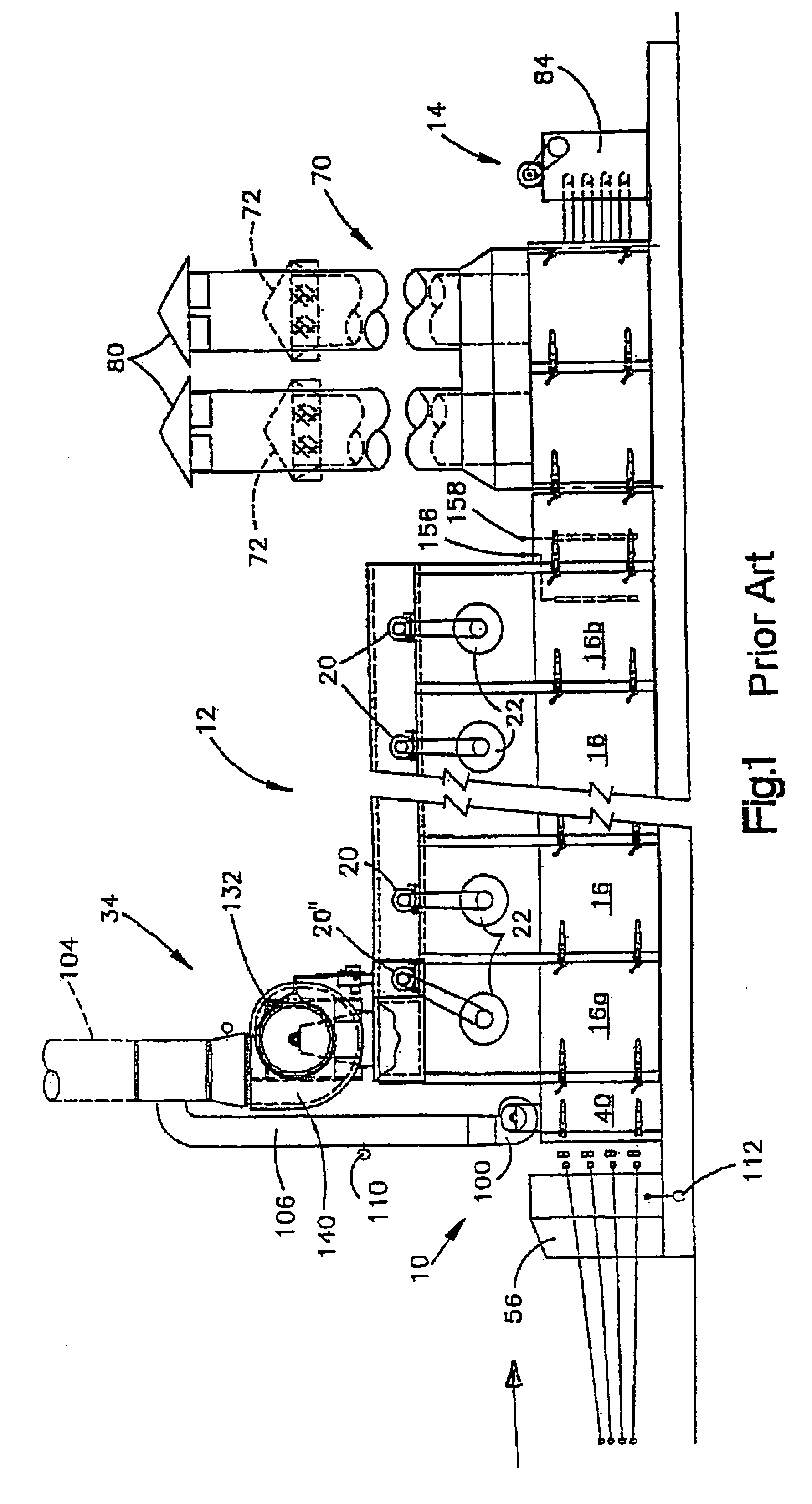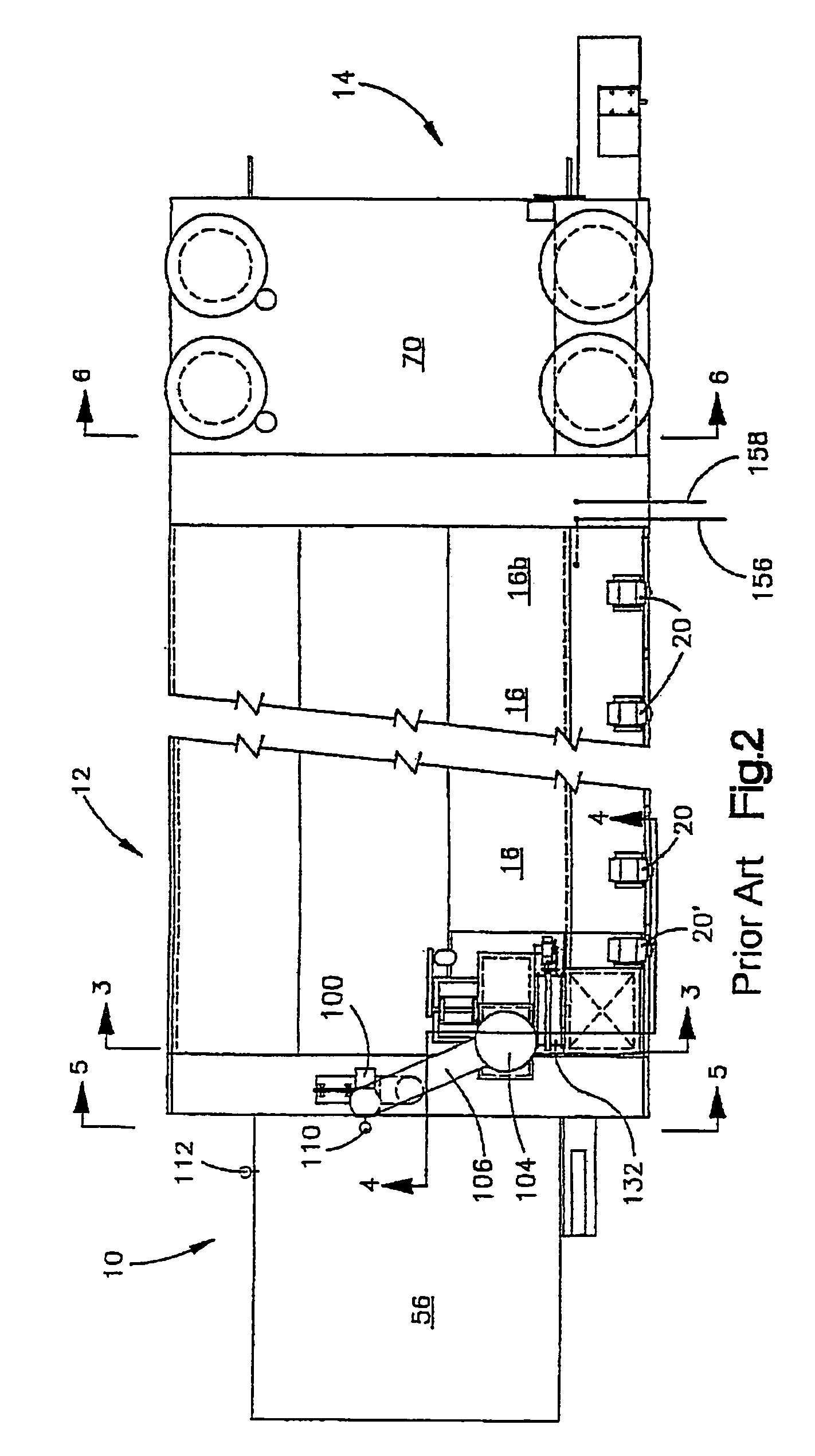Method and apparatus for inhibiting pitch formation in the wet seal exhaust duct of a veneer dryer
a dryer and wet seal technology, applied in the direction of drying machines with progressive movements, lighting and heating apparatus, furnaces, etc., can solve the problems of insufficient maintenance and cleaning practices, insufficient exhaust control settings, pitch build-up is a fire hazard, etc., and achieve the effect of reducing outflow and increasing exhaust flow
- Summary
- Abstract
- Description
- Claims
- Application Information
AI Technical Summary
Benefits of technology
Problems solved by technology
Method used
Image
Examples
Embodiment Construction
[0037]As disclosed in U.S. Pat. No. 5,603,168, FIGS. 1 and 2 illustrate the overall construction of a jet veneer dryer. A “jet veneer dryer” is the type of dryer which is used to reduce the moisture content of, or dry, sheet material, such as wood veneers, pulp board, plasterboard, fiberboard, perlite board, and the like. The material to be dried is introduced at a “wet end”10 of the apparatus, is conveyed through a drying chamber 12, ultimately exiting the apparatus at a “dry end”14.
[0038]The illustrated prior art dryer includes a plurality of juxtaposed, drying sections 16 which, in the illustrated embodiment, are virtually identical. Each drying section 16 is considered conventional and includes a drive motor 20 for driving an axial-type fan 22 which circulates air within the drying section in a circular path, transverse to the path of movement of material through the drying chamber 12.
[0039]As moisture is driven from the material passing through the chamber 12, the volume of gas...
PUM
 Login to View More
Login to View More Abstract
Description
Claims
Application Information
 Login to View More
Login to View More - R&D
- Intellectual Property
- Life Sciences
- Materials
- Tech Scout
- Unparalleled Data Quality
- Higher Quality Content
- 60% Fewer Hallucinations
Browse by: Latest US Patents, China's latest patents, Technical Efficacy Thesaurus, Application Domain, Technology Topic, Popular Technical Reports.
© 2025 PatSnap. All rights reserved.Legal|Privacy policy|Modern Slavery Act Transparency Statement|Sitemap|About US| Contact US: help@patsnap.com



